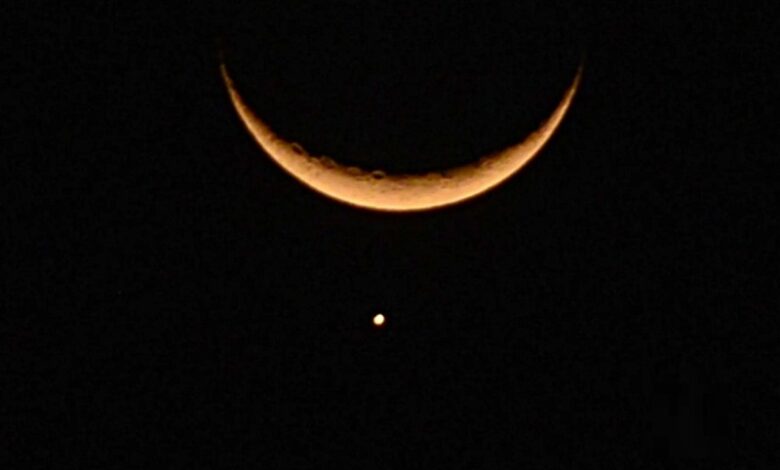Venus disappears behind the Moon in rare conjunction in the skies

The two objects appeared in the same line of sight, aligning together, as Venus slowly disappears behind the dark edge of the Moon.
Days after Venus and Jupiter came together for a rare conjunction, the brightest planet in our solar system came close to the Moon as seen from the skies. The conjunction was seen in several parts of the world as the celestial objects inched closer to each other.
The two objects appeared in the same line of sight, aligning together, as Venus slowly disappeared behind the dark edge of the Moon. While Venus is one of the brightest objects in the evening sky, the Moon trumped its brightness by nearly 250 times thanks to its closeness to our planet.
“Today Venus and Moon will be involved in an event known as a conjunction when they would “appear” to come very close to each other to an observer from the planet. In effect, they would be along the same line of sight (but still far away from each other),” Astronomical Society India Outreach and Education said in a tweet.
The lunar body is in the new moon phase and just over nine per cent of the surface was visible. The phase is known as the waxing crescent stage that lasts until half of the Moon’s visible surface is illuminated.
According to time and date, the waxing crescent moon starts as the Moon becomes visible again after the New Moon conjunction when the Sun and Earth are on opposite sides of the Moon.
It will not only be Venus which will be in the evening sky. March-end will mark a parade of five planets in the skies as seen from Earth. Five planets are set to align between March 25 to March 30 as Earth enters the equinox. Jupiter, Mercury, Venus, Uranus, and Mars will align in the skies, forming a rare parade of planets.
While all five planets continue to roam around each other in the final days of March, you will be able to see them the clearest on March 28.
(This story has not been edited by News Mania staff and is published from a Media Release)






